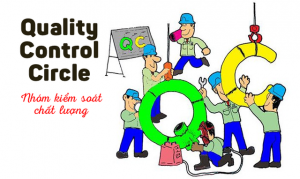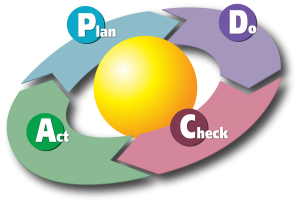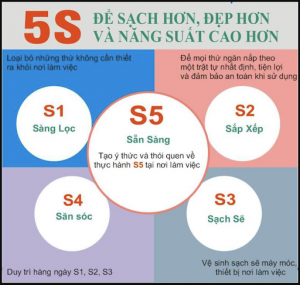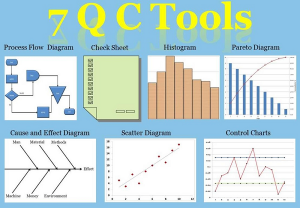Internal trainer training
Internal trainers play an important role in training an elite team for the business. Not only have to regularly improve their knowledge, internal trainers also have to regularly renew their teaching methods to bring the highest efficiency at work.
With more than 10 years of experience in the company, Joshin’s”Internal trainer training” course is designed to follow the practical training needs of the enterprise, with a highly applicable training method. Joshin is confident to help the faculty of the enterprise design training programs and materials and master the skills and teaching methods to help businesses develop sustainably and maintain their competive advantages.

COURSE OVERVIEW
Name of the course: Internal trainer training
Object: Internal trainers, managers
Training time: 2 – 3 days (designed as customer’s requirements)
Language: Vietnamese
Lecturers: Vietnamese
Forms of training: Inhouse or Public workshop
Training methods: Lecture presentation, discussion, and practice are organized in the classroom
PURPOSE OF COURSE
- Clearly understand the importance and role of internal trainers in the business;
- Clearly understand the general psychology, the student’s learning style;
- Run short training courses based on information from subjects who need training;
- Develop training documents, standard training management documents for trainers, for students attending the courses;
- Implement modern teaching methods in courses;
- Evaluate the effectiveness after training
- Confidently perform the experimental training in class and handle difficult situations
TRAINING CONTENT IN THE COURSE
The importance of subordinate training
- Why does the company need a manager?
- The importance of M in 4M (Man, Material, Machine, Method)
- The role and responsibility of the manager in guiding and training subordinates
- What problem will happen when superiors fail to train subordinates
- The difference between training and coaching
- Practice: Define roles and responsibilities in training and guiding subordinates
OJT, OFF-JT, OCT
- What is OJT, the purpose, requirements and method of conducting OJT?
- What is OFF-JT, purpose, requirement and method of conducting OFF-JT?
- What is OCT, the purpose, requirement and method of conducting OCT?
- Practice: Evaluate the current status of training through OJT, OFF-JT, OCT
Analysis of training needs
- Do a test before training
- Do surveys before training
- Confirm weaknesses and synthesize results
- Identify appropriate training topics
- Develop a personnel training roadmap
- Practice: Develop tests, surveys, interviews
- Practice: Synthesize results, identify topics and a training plan
Develop training outline
- What is a training outline? Purpose
- How to construct the logical structure of training topics
- Complete training outline
- Each group develops a training outline for each topic
Build the lecture
- Logically divide the lecture contents on the slide
- How to build structure and information on powerpoint files
- How to identify the message the trainer wants to convey to the trainee
- Select pictures, data, diagrams to help trainees understand the message trainers want to convey
- How to construct questions and answers on each slide
- How to do tests and satisfaction surveys
- Practice: Develop the lecture on topics and questions for each topic
- Practice: Build the satisfaction survey file
Build practical situations
- What is the practical situation? Purpose
- How to build practical situations and methods of execution.
- How to formulate criteria and standards for practical evaluation
- Practice: Build practical situations for each training topic
Prepare before training
- Develop a list of items that need to be prepared before training
- Prepare the training room: class diagrams, tables, chairs, etc
- Prepare necessary items: projector, screen, whiteboard, pen, A1 paper.
- Prepare for the lesson
- Practice: Develop items that need to be prepared before training
Do training before class
- Each member in each group presents practical results to the class
- Other members give questions and comments
- Trainers makes comments and then synthesizes them
Evaluate the training results
- Evaluate the results of student participation and class attitude
- Evaluate the test before and after the training, then comment on the points that need improvement for each trainee
- Evaluate practical situations in class and make comments for improvement
- Evaluate satisfied survey results and make comments
Synthesized report of training results
- Develop the structure of the result report
- Use diagram (pie, column, line, spider web, etc) in order to visualize the results in attendance, before and after the test, the level of satisfaction survey
- Use matrix diagrams to visualize practical results
- Summarize comments for each result in the report
- Summarize all results in 1 page report
- Point out points for improvement for each participant, suggest the next training program
FEEDBACK
“For fast-growing businesses, internal training is a strategic activity of the business”
“Teaching, presenting, communicating, etc. are also a profession if not an art”
“Foresight businesses always require their internal trainers to be fully equipped not only in knowledge but also in communication skills, training subordinates, etc”





























